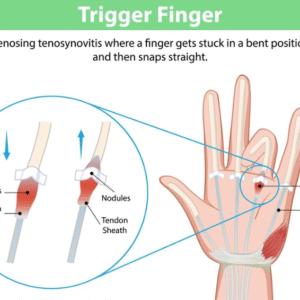If any injury is caused to the patient due to the negligence of the health care professional it is called medical malpractice. It is usually caused when a health care professional deviates from their standards. Improper use of medication may also result in medical malpractice.
Anesthesia
Anesthesia is generally used by surgeons during surgery to bring about a reversible loss of consciousness and analgesia. Anesthesia is administered intravenously and it can be inhaled. The anesthesia may produce some symptoms which are mostly minor and temporary.
Initially, diethyl ether was used to carry out painless surgery, after which anesthesia was used to perform painless operations.
The drug is administered by the anesthesiologist to the patient before the surgery. The anesthesiologist also monitors the vital signs of the patient throughout the surgery because they do not want the patient to gain consciousness during the surgery. The dose of the medicine is based upon the patient’s age, weight, and the duration of the surgery.
Types of Anesthesia
There are three types of Anesthesia:
General Anesthesia
This type of anesthesia is very safe but may show side effects after the surgery. General anesthesia causes loss of consciousness and the patient feels nothing. The medicine is administered through IV or by breathing.
Local Anesthesia
The side effects and complications associated with local anesthesia are minor and very rare. If the patient prefers to stay awake throughout the surgery and not feel the pain then they should ask the doctor to give them local anesthesia. At times local anesthesia is combined with sedation also. Local anesthesia has reduced the time of surgical procedures and shortened the recovery time also.
Regional Anesthesia
In regional anesthesia, the patient stays awake like the local anesthesia but numbs a larger part of the body. At times medicine is added in the local anesthesia to help the person relax or fall asleep. It is administered close to the nerve or bundle of nerve or the spinal cord. Regional anesthesia is associated with the risk of systemic toxicity if it is absorbed into the body through the bloodstream.
Side Effects of Anesthesia
There are certain side effects associated with anesthesia:
Nausea & Vomiting
It is one of the most common side effects of anesthesia. It can appear within the first few hours or even after few days of administration.
Itching
This side effect is associated with Nicotine mostly. Nicotine is the medicine used to relieve pain. It is at times administered along with general anesthesia.
Sore Throat
This side effect is not directly linked with anesthesia. It is caused because of the tube that is inserted in the throat so that the patient could breathe easily while they are unconscious.
Postoperative Delirium or Cognitive Dysfunction
This side effect may occur in some patients within a few hours after regaining consciousness. Older patients may be confused after regaining consciousness but this confusion mostly goes away after a week. But in fewer patients, this confusion and memory loss may be prolonged. There are chances that the people who have conditions such as heart disease, Parkinson or Alzheimer’s are at a higher risk to get these side effects.
Malignant Hyperthermia
It is a deadly side effect that may occur during the surgery causing fever and sudden muscle contractions.
Hematoma
It is a condition in which blood forms a clot beneath the skin. The hematoma may be formed at the site of administration where the anesthesia was injected.
Back Pain
Local anesthesia is injected sometimes into the spinal cord. This may cause minor back pain where the needle was inserted.
Nerve Damage
To numb the specific area the anesthesia is injected into the nerves. Sometimes while injecting the medicine the nerves can be damaged. It can cause temporary or permanent pain to the patient.
Pneumothorax
If the anesthesia is injected into the area which is near the lungs so the needle can penetrate the lungs by mistake. The lungs will collapse causing difficulty in breathing. The tubes are then inserted through the air pathway to re-inflate the lungs again.
Risk
Although anesthesia is considered safe nowadays. Certain conditions in older adults increase the risk to the patient undergoing general anesthesia:
- Heart patient is at risk
- The patient who smokes cigarettes
- A Patient who drinks alcohol is at risk
- The one who has a history of reactions to anesthesia
- Drug allergies exist previously
- High blood pressure
- Existing kidney diseases
- Obesity and diabetes
- Already have drug allergies.
Unintended Intraoperative Awareness
It is a very rare condition in which the patient gains consciousness while the surgery is going on. The patient may be unable to signal the anesthetist.
At times awareness occurs for a short time and before the procedure starts. If the awareness occurs during the procedures then it leaves an impact on the patient’s mind forever. The patient may also suffer long-term psychological problems.
The potential risk factors causing intraoperative awareness include:
- Heart problem
- Emergency surgery
- Cesarean section
- Anesthesiologist error
- The additional medications
Stages of Anesthesia
There are essentially four stages of anesthesia:
STAGE #1:
This is the first stage also known as Induction. In this stage, the medicine is administered to the patient and loss of consciousness occurs.
STAGE #2:
This is the excitement stage. Loss of consciousness is followed by pupil dilation, heart rate becomes erratic and breath-holding may be caused. Modern drugs try to limit this stage of anesthesia because of irregular breathing and vomiting.
STAGE #3:
In this stage, the muscles are completely relaxed and breathing is depressed. The eye movement is ceased completely. The patient is now ready for the surgery to get started.
STAGE #4:
This is the stage where an overdose of anesthesia is given. Because of the excess of medication administered the respiratory and cardiovascular system collapses. The main target of an anesthetist is to take the patient to stage 3 and keep them there until the procedure is completed. Stage 4 of anesthesia is fatal.
Malpractice liability for an anesthesia error
Medical malpractice cases may occur in many ways but the many reasons are due to the negligence of the health care providers. To prove that the anesthetist was negligent the lawyer will need to hire a medical witness. The witness must be an expert to understand the pre-surgical risk factors and the anesthetist’s operative notes. Generally, patients are concerned with what happens if you get too much anesthesia? The answer is the patient may suffer from lack of oxygen, brain damage or this situation can possibly be fatal for the patient.
When is a hospital liable in lawsuit?
To claim medical malpractice it is necessary to check whether the hospital or the anesthetists is liable or not.
If the anesthetist is hired by the hospital then the hospital will be liable for the medical malpractice committed by the doctor. If the medical malpractice occurred due to the anesthesia equipment which was not working properly then also the hospital may be considered independently negligent in maintaining its equipment.






